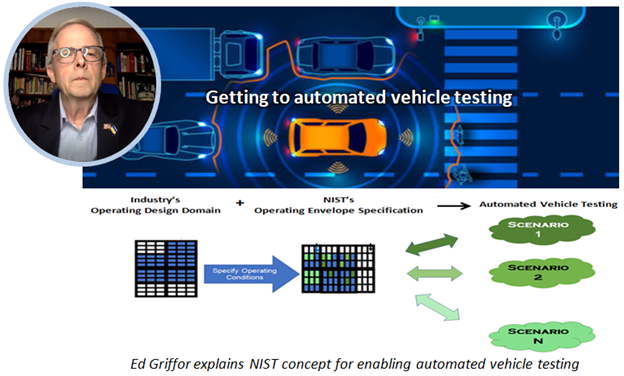
In the breakout session of the TRB's 11th International Automated Road Transportation Symposium, entitled ADS Standards Hot Topics: Operational Design Domain (ODD) & Operating Envelope Specification (OES), NIST's Ed Griffor presented NIST's OES concept, which was designed to support measurement of automated vehicle (AV) performance and ultimately to enable testing and certification. The OES is described in the NIST Special Publication 1900-301, Automated Driving System Safety Measurement Part I: Operating Envelope Specification.
The OES complements industry's Operational Design Domain which describes under what conditions an automated vehicle is designed to operate – roadway infrastructure, traffic, weather and more – and which is used by OEMs and developers to design AVs. “OES goes further,” indicated Griffor, “by providing a framework for measurement of an AV's operating environment, and so supports the specifications of key vehicle behaviors – such as lane following, lane change and navigating intersections.” OES is a critical component of the “science of automated driving,” remarked Griffor. In this way, OES measurements of operating conditions inform both the AV itself and allow the development of testing scenarios and their associated acceptance criteria – like maintaining an acceptable distance from other vehicles and obstacles in and around the roadway.
Griffor further stated that AV behaviors can only be engineered and assessed in relation to the driving environment and that NIST's contribution, on this measurement front of AV behaviors and operating conditions, can support “down the road,” the development of AV and advanced mobility standards.

